F-35 jets have used their vertical landing capability to land on new Vertical Landing Pads at RAF Marham for the first time, say the MoD.
The Norfolk site is the Main Operating Base for the F-35 in the UK.
According to the MoD:
“The F-35’s STOVL capability will provide operational flexibility including landing on the Royal Navy’s new Queen Elizabeth Class aircraft carriers. Initial flight trials of the F-35 Lightning aircraft from HMS Queen Elizabeth are on track for 2018, allowing a coherent build-up towards delivering a carrier strike capability for the UK from 2020.
Construction presented a significant engineering challenge. Due to standard concrete not being suitable, the design team had to source special materials from Germany to make a concrete which has the ability to withstand the high temperatures created by aircraft engines. Without this there would be a risk of cracking which in turn could present significant risk to the aircraft. This was the first time this material has been used outside the USA and required a rigorous testing process to ensure the landing pads were fit for purpose.”
Lt Col Ian Jenkins, Defence Infrastructure Organisation Project Manager for the VLPs, said:
“Vertical landing is a really exciting military capability and from an infrastructure perspective it’s been fascinating to be involved in the design and construction process. It was really exciting and rewarding to see an F-35 landing on the first vertical landing pad to be finished and I look forward to seeing more as we continue to work on other infrastructure upgrades required for the F-35s.”
Each landing pad measures 67m long and 67m wide, with a central landing area of 30.5m by 30.5m.
Four F-35B Lightning aircraft arrived at their new home at RAF Marham on the 6th of June this year, starting the build-up of the newly-reformed 617 Squadron in the UK. The successful first use of these new pads, say the MoD, is another step closer towards successfully reaching Initial Operating Capability for the UK by the end of the year.


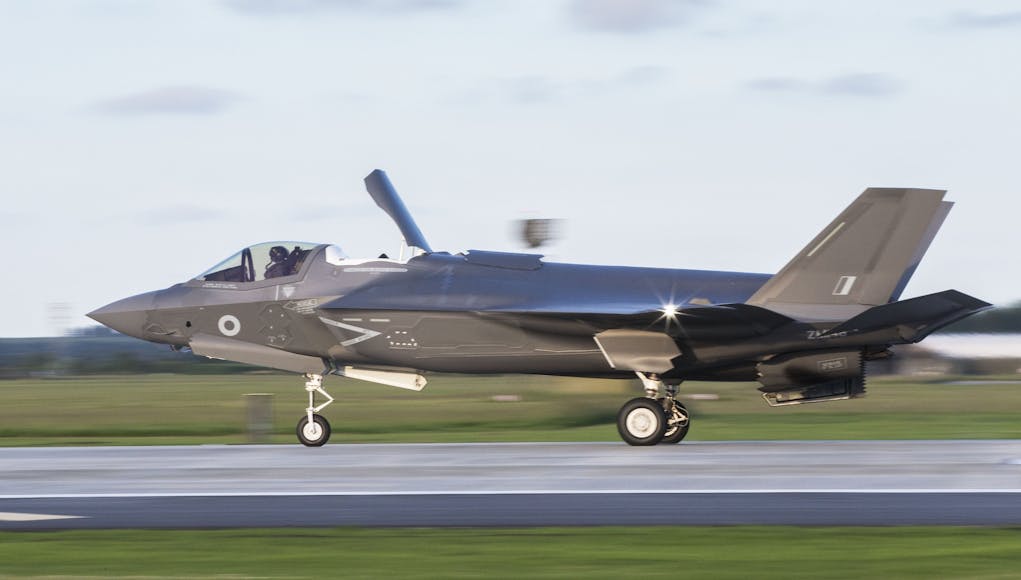

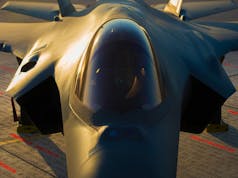


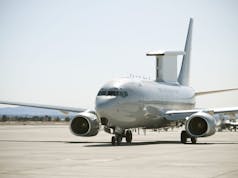
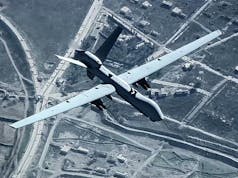
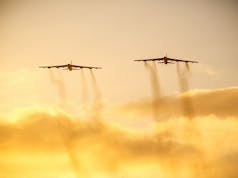
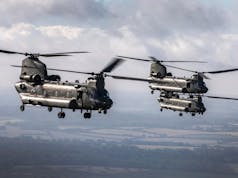
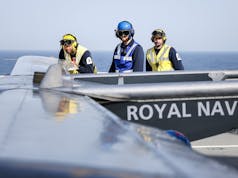
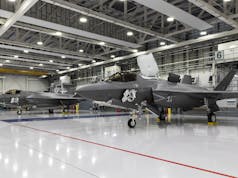

Wouldn’t steel plate have done the job you know like on a carrier?
Probably but would still have had to be coated with a High build heat resistant twin pack so concrete is probably easier and will last longer and of course, is not suitable for a Carrier deck!! Where are the next batch of F 35’s? The next 5 were supposed to be coming in late June!
I think they’ll be arriving in August.
5 are coming in next week according to this evenings edition of BBC Look East
They are all on time to the procurement timetable
Maybe the use of steel would have seen heat being transferred to the aircraft’s tyres, comprising their integrity (?)
*compromising
I’m staggered that the DIO team did not use steel, of the same characteristics as used on the carriers, and the same thermal coating to emulate the carrier experience. This would surely be a) more realistic and b) more expedient than researching/ordering the concrete from Germany……..?
concreat will be a lot cheaper. Even special stuff
I’m sure they looked into this and I’m sure concreat even special concreat is much cheaper
What interests me is if these are to be used by the RAF how do they use its STOVL ability without carrying one of these pads around with them. I guess the reported risks will be deemed acceptable in combat scenarios.
Exactly. bit different to the old Harrier RAFG dispersal on autobahns and forest clearings. You imagine VSTOL offers a lot of flexibility but actually it doesn’t as you need special pads to land on. Perhaps another reason why F35B should NOT be compared to Harrier in any shape or form (other than they are both combat aircraft)
Because it’s repeated use over a sustained period which will damage certain surfaces. Nothing will stop the F-35 landing where it needs to for future training, exercising and combat purposes.
Because it’s repeated use over a sustained period which will damage certain surfaces. Nothing will stop the F-35 landing where it needs to for future training, exercising and combat purposes.
I think your assuming they will be dispersee to remote sites as we’re the Harriers. I don’t think that’s the plan
At least we have now put the no planes for our carriers idiocy to bed….
One can dream. Many people will go on sprouting the leaking, no planes, Harrier would be better, should have cats and traps and can be killed in an instant by hypersonic wonderweapons crap for time to come. Its all bollocks apart from possible the point about hypersonic weaponry.
Dont forget super cavitation torpedoes carriers insta die to them……don’t ya know…..
There’s probably a figure of how many landings have to happen on the same spot before ordinary concrete cracks up. In an expeditionary situation that might be fine for a month or two.
But at the main home base where they will practice landings week in week out for years they obviously need to be accordingly more robust.
I agree. They could still likely land on a road and it’ll be fine it just wouldn’t be advisable to do it that often.
Lets see these rolling landings with tanks and weapons. Still completely untested and potentially a major issue for the QE carriers. If the results are not good then the range for operations and weapons load out will be a joke.
They did rolling landings when they first landed in the UK after having flown from the USA didn’t they? That’s certainly what it looked like to me on that “F**k that was loud” amateur video that someone filmed and posted on YouTube. Did they at least have tanks on for that? (I forget.) I don’t know how full they would have been at that point but it’s something.
I wouldn’t have thought it’s a big risk factor in terms of not working. It will have been modelled very carefully in terms of undercarriage and rest of airframe stress, momentum and braking ability etc. Even better, all this work for years and years on the test planes in the USA will have allowed them to calibrate the computer models by looking at things like transmitted undercarriage forces on various takeoffs and landings and calibration of the models is a big deal that massively increases confidence in the accuracy of computer modelling.
Computer modelling really is very good nowadays. For instance people of my sort of age know about crash testing for new cars and probably think that manufacturers actually do some live tests during design to make sure their cars will pass. Well, as far back as 2001 this is not the case. Ford for instance does zero live crash testing on any new car model(*), it is all done by computer simulations (Finite Element Analysis). The first car that is ever physically crash-tested in pulled off the live production line and submitted to the authorities for the actual formal physical test. Given the consequences of it failing to pass that shows the faith that major car companies have in their FEA simulations. FEA is what will have been used to simulate the stresses on F-35 rolling landings and Computational Fluid Dynamics (CFD) used to model the aerodynamic properties, exhaust gas behaviour, etc.
Having said all that, I agree that it is so important to weapons recovery that getting the live rolling landing tests ticked off the to-do list is something that I will be very glad to see done although the thing I’m most nervous about in terms of getting tests ticked off is how the thermal coating on the carriers holds up in early live testing.
(*) I sat in a meeting in 2001 with the Ford group in charge of the FEA computing resources and was told this fact directly by the head of that group.
I can attest to how bloody loud the F35B is, I was at this year’s RIAT Fairford! There were two F35 types at the show a F35A from the USAF and our F35B. The F35A put on quite an impressive aerobatic display. Our F35B was limited to flybys and going into the hover as they are not cleared for aerobatic displays – yet. What I did notice however, is how rock steady the F35B is compared to the Harrier in the hover.
The test aircraft have been carrying out short rolling take-offs as Pax river using the same technique as the landing procedure. So in theory there should be no issues using the same for landing. However, the real test will be when QE does the trials off the US coast later this year. I am pretty certain once they are proven on QE the USMC will doing the same on their Wasp class LHDs.
It would be a bit odd if the USMC didn’t adopt SRL if/when we prove it in practice, the extra capability it gives for weapons/fuel return must surely be a compelling cost/resource saving for anyone operating F-35B. Don’t forget the Italians either since they plan to operate F-35B as well.
On the rock-steady hover I guess that’s modern flight computers for you. I worked with an ex Harrier pilot back in the 1990s. He said that hovering a Harrier was a bit like trying to balance a ping-pong ball on the top of a hairdryer air stream.
Lets see these rolling landings with tanks and weapons. Still completely untested and potentially a major issue for the QE carriers. If the results are not good then the range for operations and weapons load out will be a joke.
Untested? I thought that was extensively tested previously surely??
They have been thoroughly tested and developed into a standard operating procedure. Initial tests were done before the F35B even flew, using Harriers.
As I thought.
Wrong ! No testing has been done on carriers in real weather and sea conditions. Bronk brought this up at at the select committee meet last year. It is still a big unknown.
Also mentioned by personnel in recent interviews that while they have ran multiple simulated landings none have happened in real world conditions.
Also no acknowledgement of what additional stress and strain this mean for the airframe and also poorly performing tires.
Rolling landings are to allow aircraft to land still carrying heavy weapons in very hot conditions. It has exactly zero to do with how far the aircraft can fly and how much it can carry. That’s determined at take off, not landing.
Aside from the squadron embarked upon USS Wasp.
This is just great.
No need to replicate QE’s using steel. They are dual service (RAF / Navy) aircraft. They will be landing on concrete more of then that QEs and it will be much easier to maintain.
I love the way this project is coming together. I am also unconcerned about small numbers today, given the dev trajectory of F-35 I think the buy rate so far has been timed perfectly.
My only gripe remains the same – lack of future mass. It’s now time to speed up both the numbers and rate.
Very relevant article on the QE airgroup workup for 2020. NOTE the FSL states this will include “a full airwing”. Will be interesting to see what that final number will be and if it will be all UK or joint with the USMC.
https://defaeroreport.com/2018/07/25/royal-navys-jones-on-road-to-queen-elizabeth-carrier-strike-group-future-of-maritime-combat/
Cheers!
Thank you Helions!
That was a very revealing interview – thanks for sharing link.
Clear that FSL & DS want the same thing but are working against #s 10 & 11
Let’s see what happens but it feels like PM & CX have won.
You are all very welcome. I am really looking forward to the QE deployment to the U.S. if it spends any time at NAS Pensacola, NAVSTA Jacksonville, or Mayport I’m planning on going to see her in person.
Cheers!
Probably a dumb question:
Hexagonal deep matting can hold gravel or soil, both of which have superior heat dispersal properties to steel or concrete and, of sufficent depth, high mass load capacity.
For land launch, whould this be an alte4native to dedicated airstrip?
It would also allow temporary deployment at all airports as greenspace is required (at least in the UK) such that radar systems can be used without taking up runway time/space.
Feel free to call me an idiot – I really won’t be offended.